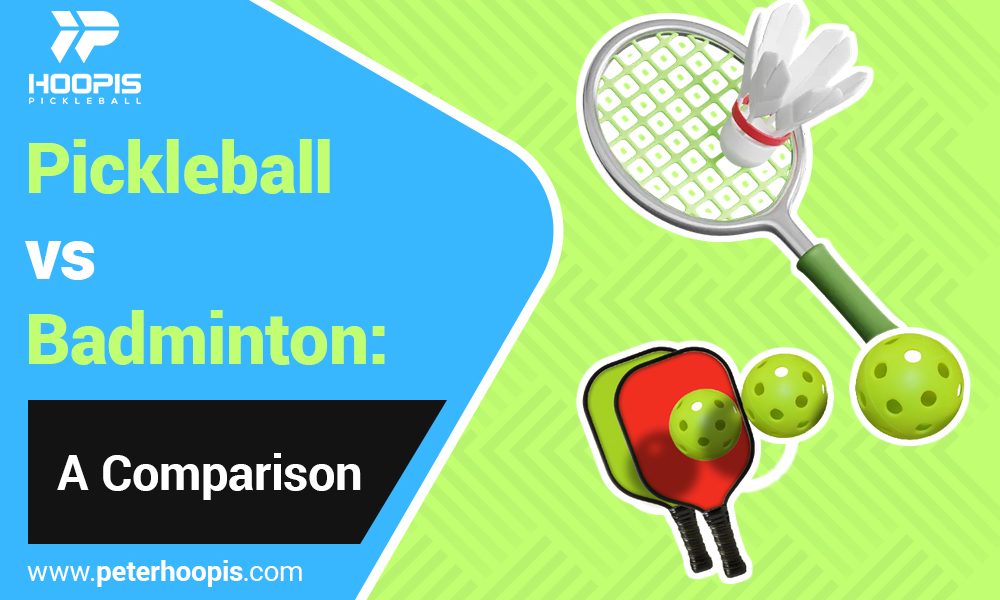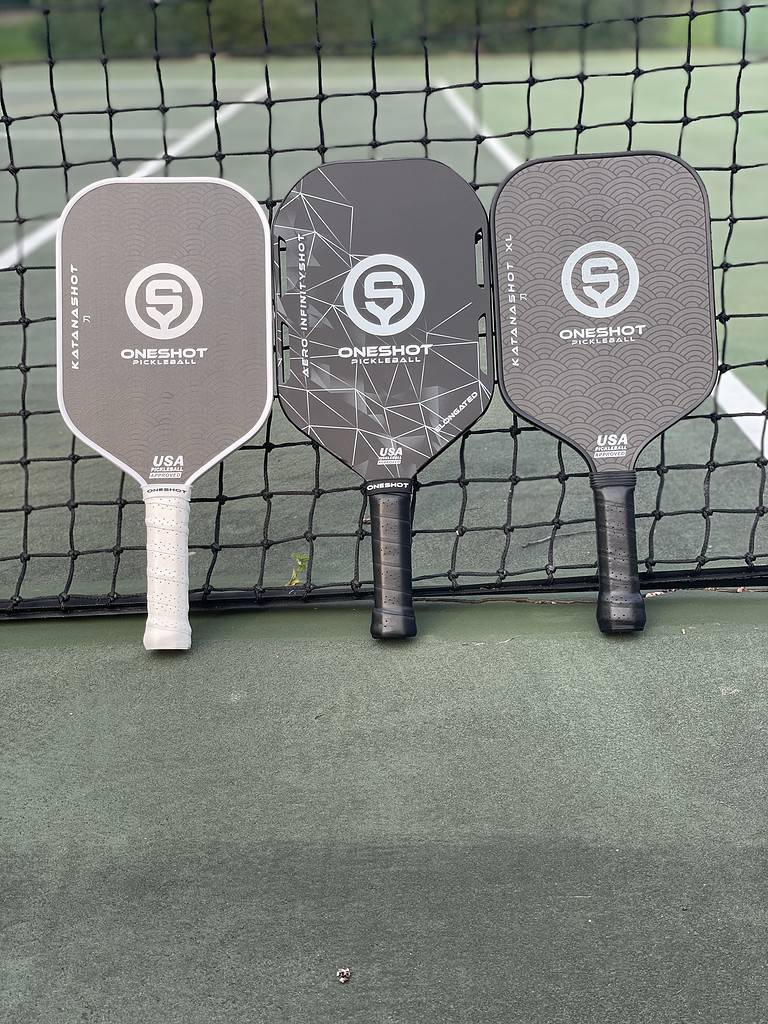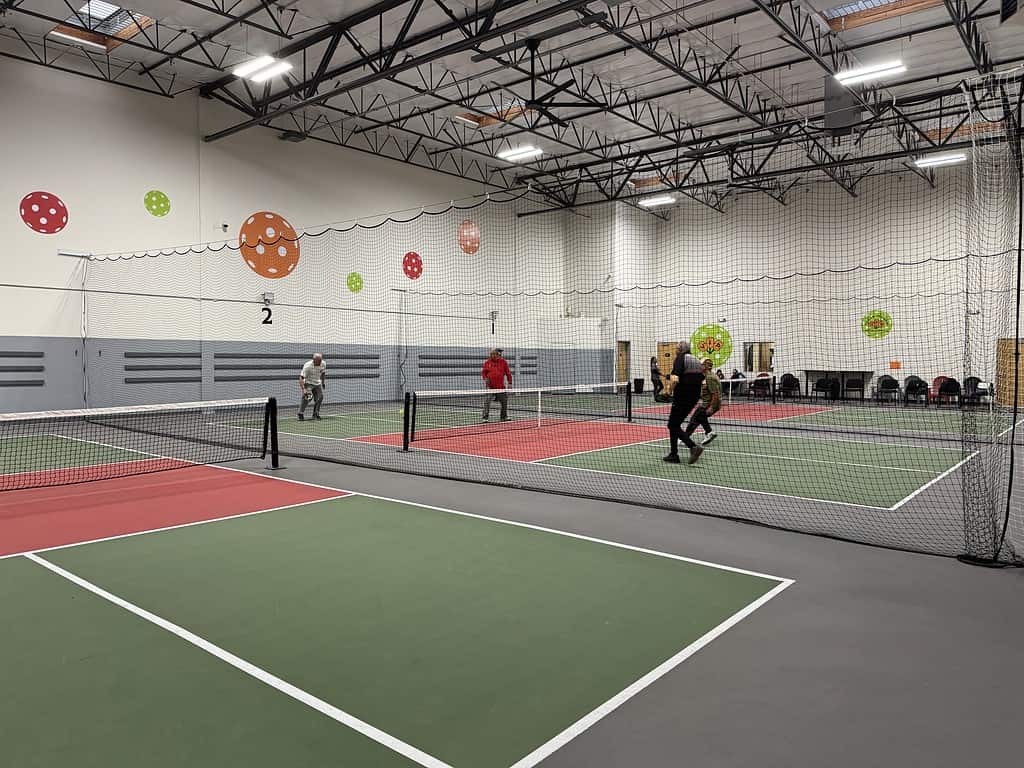Pickleball and badminton are both highly popular sports and eah have experienced a surge in popularity in recent years.
Pickleball, as you may have heard, is the fastest growing sport in America.
Although they may appear similar, there are definitely some differences that set pickleball apart from badminton.
Pickleball’s popularity is primarily from its easy-to-learn nature and the social atmosphere that comes with it. Just check our your community centers or local parks and you will see players of all ages laughing and enjoying themselves out on the pickleball court.
On the other side of the net, we have badminton, a sport knwon for its speed and agility. Playing badminton combines finesse, power, and strategy to engage players and fans alike.
So, why am I going into pickleball vs badminton?
Both racket sports offer unique experiences, health benefits, and vibrant communities. However, they differ in various aspects, such as equipment, courts, emphasized skills, and physical demands placed on players.
Whether you are a seasoned athlete seeking a fresh challenge, a fitness enthusiast exploring enjoyable ways to stay active, or simply curious about these two incredible fun sports, understanding these differences and similarities will help you in determining which one aligns best with your interests and fitness goals.
Let’s get started.
Pickleball vs Badminton: A Look into the Past
Pickleball: From Backyard Fun to National Phenomenon
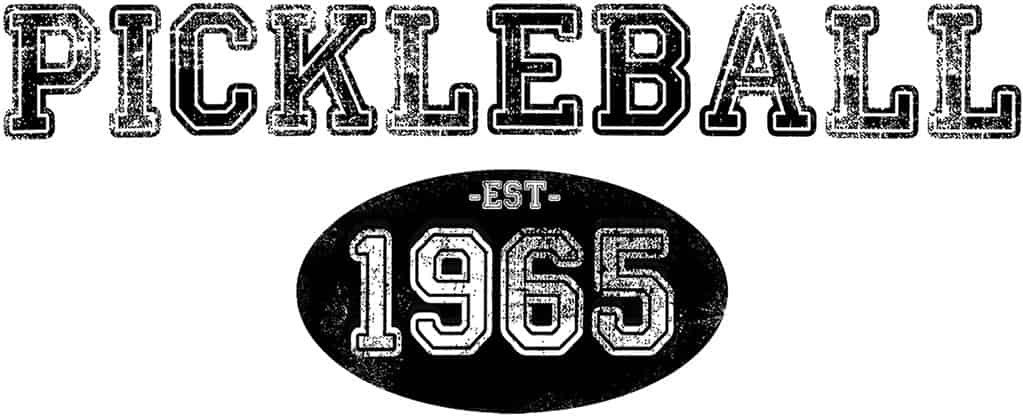
Picture this: It’s the summer of 1965 on Bainbridge Island, Washington. Three dads—Joel Pritchard, Bill Bell, and Barney McCallum—return home to find their families bored, with nothing to do. In a stroke of genius, they take to an old badminton court, lower the net, grab some table tennis paddles and a wiffle ball, and voilà, pickleball is born.
What started as a simple game to entertain their kids quickly spread like wildfire. By the 1970s, pickleball began to formalize with rules, and by the 21st century, it transformed into one of the fastest-growing sports in America.
Its quirky name? Rumor has it, it was named after Pritchard’s dog, Pickles, who loved to chase the ball. However, the real story is it was named after the term “pickle boat,” a term in rowing where “oarsmen were chosen from the leftovers of other boats.” relating to using all the leftover supplies to create the game.
But don’t worry, there actually was a dog named pickles who chased the balls, but he came after the game was named 🙂
Badminton: A Journey from Ancient Civilizations to Olympic Glory
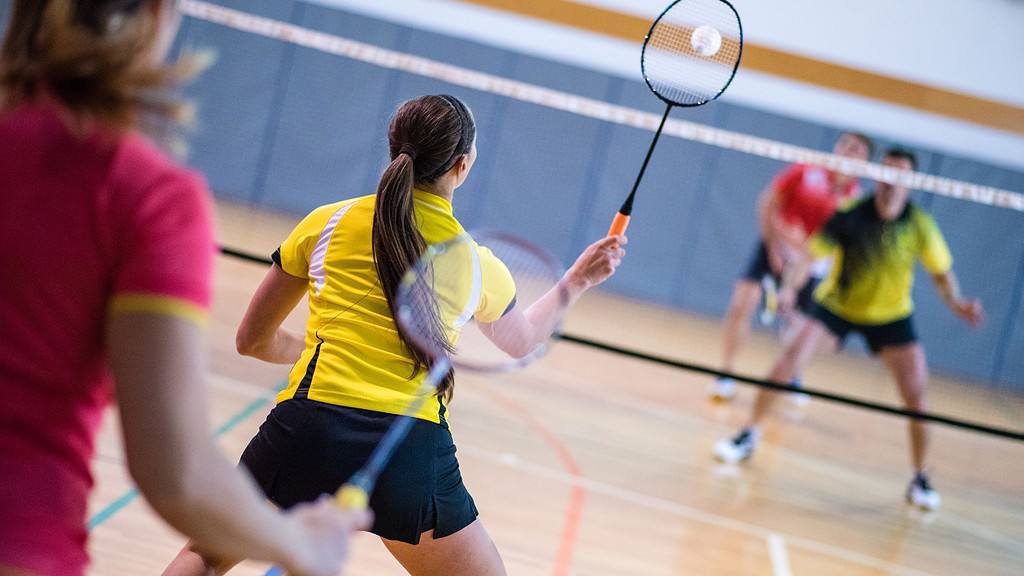
Badminton’s story stretches back centuries, with roots tracing to ancient Greece, China, and India. However, the way we play badminton today began to take shape in the mid-19th century in British India.
Named after Badminton House, the country estate of the Duke of Beaufort in England, where the sport was introduced to British society, it quickly became a hit. The Bath Badminton Club, formed in 1877, standardized the first set of rules for playing badminton, setting the stage for badminton’s global spread.
From the shadowy lawns of English estates to the bright lights of the Olympics, where it made its debut in 1992, badminton has evolved into a fast, thrilling sport enjoyed by millions worldwide.
Gearing Up for the Game: Equipment and Court Setup
Pickleball: Paddles, Balls, and Courts
In pickleball, players use a solid pickleball paddle made of advanced materials to strike a lightweight, perforated plastic ball similar to a wiffle ball and much lighter than a tennis ball. These paddles are similar, but much bigger and thicker than ping pong paddles. This unique setup creates the game’s distinctive sound and playing style, favoring strategic placement over power. The ball, similar to a whiffle ball, comes in two varieties for indoor and outdoor play.
Pickleball court dimensions are 20 feet wide and 44 feet long. Similar to a doubles badminton court, the net is hung at 36 inches on the ends and dips to 34 inches in the middle. The court is divided into sections, including the non-volley zone (or “kitchen”), a seven-foot area near the net, adding strategy to this fun game.
Badminton: Rackets, Shuttlecocks, and Feathered Flight
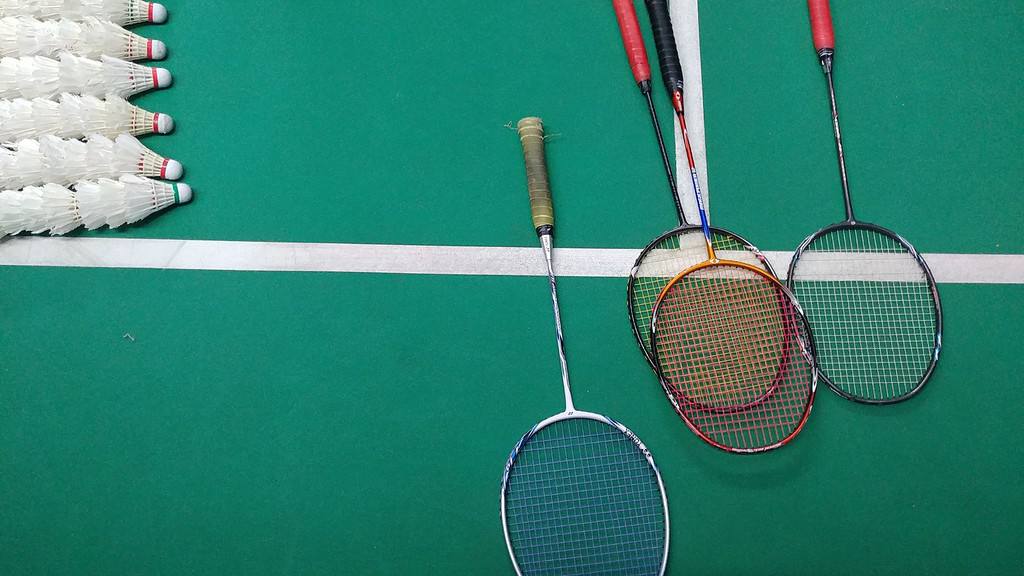
In contrast, badminton players use lightweight rackets with a long handle and a stringed striking area. The badminton racquet is specifically designed for hitting a shuttlecock, a projectile that maintains stability in the air. The shuttlecock has a feathered or synthetic skirt, which slows its movement. This unique design leads to exciting rallies and fast exchanges on the badminton court.
The badminton court size is a long and narrow rectangle. For doubles matches, it is 20 feet wide (the same as a pickleball court), and for singles matches, it is 17 feet wide. The length of the court is 44 feet. The badminton net is 5 feet 1 inch at the edges and 5 feet high in the center. It requires players to have precise control and aim to outmaneuver their opponents.
Mastering the Game: Rules and Scoring
To get started in pickleball and badminton, it’s important to understand their rules and scoring systems.
Pickleball: Keeping It Simple and Social
Here’s a quick rundown:
- Serving: The serve must be made underhand, with the pickleball paddle below the waist, and the ball must be dropped from the waist before hitting it. Serves are made diagonally, starting from the right-hand service square, and must clear the non-volley zone, including the line.
- Scoring: Pickleball games are typically played to 11 points and must be won by 2 points. Unlike badminton, only the serving team can score points when the opposing team fails to return the ball or commits a fault.
- Faults: Common faults include hitting the ball out of bounds, not clearing the net, stepping into the non-volley zone (the “kitchen”) on a volley, and serving incorrectly.
Badminton: Speed, Precision, and Agility
Badminton’s rules highlight the sport’s emphasis on speed, precision, and agility:
- Serving: Serves must be hit below the waist with an underhand stroke, ensuring the shuttlecock is sent diagonally over the net to the opponent’s service court. Unlike pickleball, the server has less room for error, as the shuttle must land within the marked service area.
- Scoring: Badminton adopted a rally scoring system, where points can be scored on every serve, regardless of which side serves. Matches are typically played best of three games, with each game played to 21 points. To win a game, a player or team must lead by at least 2 points or be the first to reach 30 points if the score ties at 29-29.
- Faults: Faults in badminton include hitting the shuttle out of bounds, failing to clear the net, and violations during the serve or in play. Unlike pickleball, badminton has a more stringent definition of a “fault” during serves, including the shuttle not landing in the correct service court.
The Athletic Dance: Physical and Skill Demands
Both of these racquet sports are more than just fun and games; they’re a full-body workout that tests your physical endurance, mental acuity, and technical skills. Let’s explore what each sport demands from its players and how they compare.
Pickleball: A Blend of Strategy and Stamina
Playing pickleball may seem leisurely at first glance, but it requires both physical and mental skills. The game is less about brute force and more about strategic finesse.
- Physical Intensity: While the pickleball court is smaller than a tennis court, playing pickleball is still a considerable workout. The game involves a lot of quick, short bursts of movement—sprinting to the pickleball net, moving laterally across the court, and constant starting and stopping. This makes it excellent for cardiovascular health without putting excessive strain on the body.
- Skill Demands: Successful pickleball players excel in hand-eye coordination, strategic shot placement, and anticipation of opponents’ moves. The ability to control the ball, placing it precisely where you want on the court, often outmaneuvering rather than overpowering the opponent, is key. The social aspect of doubles play also emphasizes teamwork and communication.
Badminton: Agility, Speed, and Precision
If you have played badminton, you know it is known for its physical demands, requiring players to have great levels of fitness, agility, and skill.
- Physical Intensity: badminton players can cover more than a mile in a single match, darting around the badminton courts at speeds that demand intense cardiovascular stamina and muscular endurance. The game’s pace requires lightning-fast reflexes, explosive power for jumps and smashes, and the agility to change direction instantly. Badminton is a test of both speed and endurance.
- Skill Demands: Mastery over the shuttlecock’s trajectory, speed, and angle is essential, alongside strategic shot selection to outplay the opponent. Precision in hitting the shuttlecock, whether it’s a powerful smash or a delicate drop shot, demands a high level of skill. The ability to read the game, anticipate the opponent’s next move, and react swiftly is important for success.
Setting the Scene: Playing Environment
Both badminton and pickleball can be played in different environments. However, each racket sport has its own preferences and considerations that determine the ideal way and place to enjoy them.
Pickleball: Versatility Across Venues
Pickleball’s adaptability is one of its most appealing aspects. It can be played both outdoors and indoors, making it a year-round sport regardless of weather conditions.
- Outdoor Play: Many pickleball players enjoy playing outdoors in parks and recreational facilities, where dedicated courts or temporary setups offer a chance to enjoy the fresh air and social atmosphere. Outdoor play requires consideration of elements like wind and sun, which can affect the game’s dynamics and strategy.
- Indoor Play: Indoor pickleball courts, often found in community centers, gyms, and schools, provide a controlled environment free from the whims of weather. Indoor play eliminates external factors like wind, making the game more about skill and strategy than adaptation to conditions.
- Seasonality and Weather: The beauty of pickleball lies in its year-round accessibility. Outdoor courts are popular in warmer months, while indoor venues offer a refuge during winter or inclement weather, ensuring the game never has to stop.
Badminton: Predominantly an Indoor Affair
While badminton can technically be played outdoors, the sport’s competitive scene and most recreational play occur indoors due to the shuttlecock’s sensitivity to wind.
- Indoor Play: The preferred environment for badminton is indoors, where conditions can be kept consistent, and the light, aerodynamic shuttlecock isn’t at the mercy of the wind. This allows for the high level of precision and speed that badminton is known for.
- Outdoor Play: Casual badminton—often seen at picnics, beaches, or backyard gatherings—does happen outdoors, but the play is significantly affected by the wind, making serious competition impractical in such settings.
- Seasonality and Weather: Badminton’s indoor nature makes it a perfect all-year sport, unaffected by seasonal changes or weather conditions. This consistency allows players to focus on skill development without adjusting for external factors.
The Thrill of the Game: Competitive Scene
Badminton and pickleball offer social and health benefits, but they also attract competitive players who seek challenge and achievement.
Pickleball: Rapid Growth on the Competitive Circuit

The competitive scene in pickleball has seen exponential growth alongside the sport’s overall popularity. Players of all ages and skill levels are finding their way into competitive play.
- Tournaments and Championships: There are a variety of pickleball tournaments all over these days. The USA Pickleball National Championships and the US Open Pickleball Championships are among the most prestigious events, drawing players from across the country and around the world. These tournaments showcase the highest levels of skill and strategy, offering a glimpse into the sport’s professional potential.
- Professional Scene: The Professional Pickleball Association (PPA), Major League Pickleball (MLP) and the Association of Pickleball Professionals (APP) are leading the charge in professionalizing the sport, hosting tours and events that provide a platform for the world’s top players to compete and earn rankings.
Badminton: A Global Phenomenon with Deep Roots
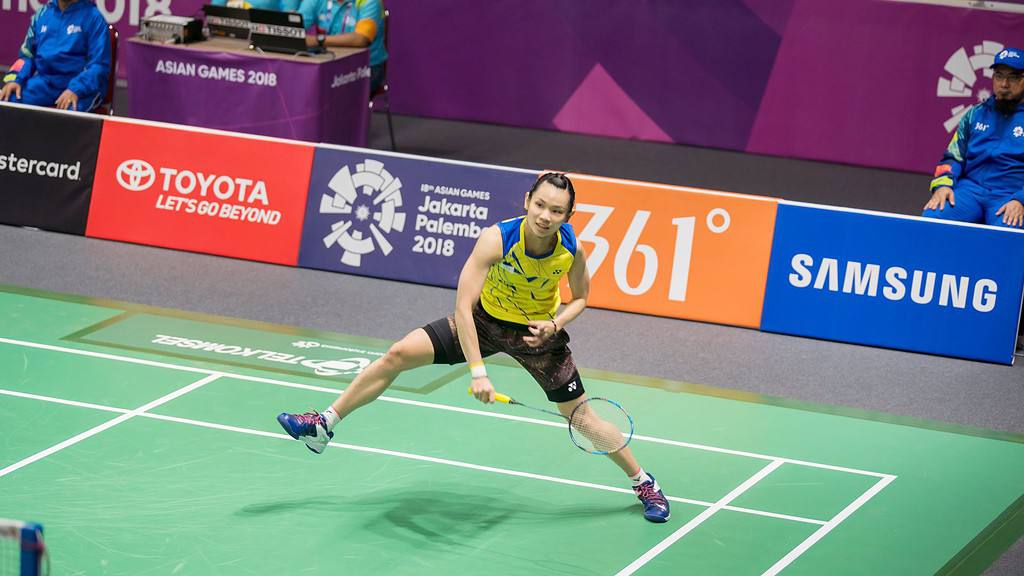
Badminton has an amazing competitive scene, with a rich history and a global presence that highlights its status as a serious sport.
- Tournaments and Championships: The BWF World Championships and the All England Open Badminton Championships are among the sport’s most iconic events, steeped in tradition and showcasing the pinnacle of badminton talent. The Olympics, since badminton’s inclusion in 1992, represent the ultimate stage for the sport, where athletes from around the globe compete for national pride and Olympic glory.
- Professional Scene: The Badminton World Federation (BWF) governs the international competitive scene, organizing a circuit of tournaments that include the World Tour, Super Series, and Grand Prix events. These competitions offer players the chance to earn world rankings and compete at the highest levels, with athletes from countries like China, Indonesia, Denmark, and Malaysia often dominating the leaderboards.
Conclusion
In conclusion, both badminton and pickleball offer unique experiences that cater to various interests and skill levels, making each sport engaging for casual players and fiercely competitive for those seeking to climb the ranks. Whether you’re drawn to pickleball’s friendly, community-driven courts or the fast-paced thrill of badminton, there’s no denying the fun and fitness these sports provide.
So, grab a paddle or a racket, and join the millions who have already discovered the joy and excitement of these fantastic games. Who knows? You might just find your next athletic passion. See you on the courts!

